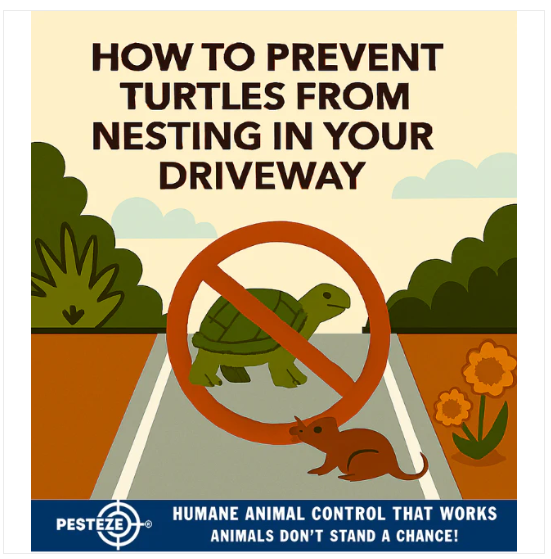HOW TO PREVENT TURTLES FROM NESTING IN YOUR DRIVEWAY

HOW TO PREVENT TURTLES FROM NESTING IN YOUR DRIVEWAY
SUMMARY
Turtles may choose driveways as nesting spots, but it’s not safe for them—or your car. This guide offers humane ways to redirect nesting behavior and protect both turtles and property.
FEATURES
-
Understand Nesting Behavior: Turtles seek warm, sandy areas to lay eggs.
-
Modify Surface Texture: Use gravel or mulch to discourage nesting.
-
Install Barriers: Low fencing can redirect turtles to safer zones.
-
Create Alternative Nesting Sites: Offer nearby sandy patches or garden beds.
-
Limit Access During Nesting Season: Use temporary deterrents.
-
Educate Neighbors: Prevent accidental harm through awareness.
GUIDE DESCRIPTION
Turtles often seek warm, loose surfaces to lay their eggs—and unfortunately, driveways can seem ideal. But nesting in high-traffic areas puts both turtles and their offspring at risk. The key is to gently redirect their behavior without harming them.
Start by understanding why turtles choose driveways: warmth, texture, and exposure. Modify the surface by adding gravel, mulch, or other materials that make it less appealing for digging. You can also install low, temporary fencing or garden edging to guide turtles toward safer nesting zones.
Provide alternative nesting areas nearby. A sunny patch of soil or sand in your yard can serve as a turtle-friendly option. Make sure it’s quiet, undisturbed, and away from foot traffic or pets.
During nesting season (typically spring to early summer), monitor turtle activity and limit access to driveways using cones, signage, or temporary barriers. If you find a nest, contact a local wildlife expert before moving it—relocation must be done carefully and legally.
Educating your neighbors helps build a community that protects local wildlife. Simple changes can prevent harm and support turtle conservation.
- Amy Chang


Comments 0